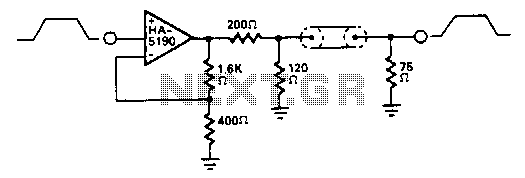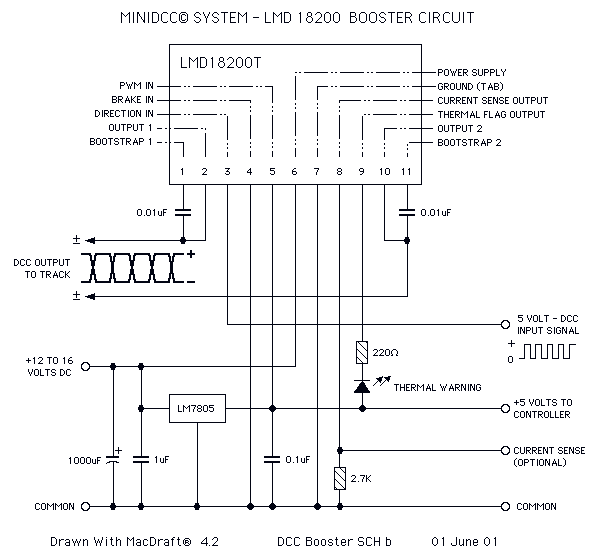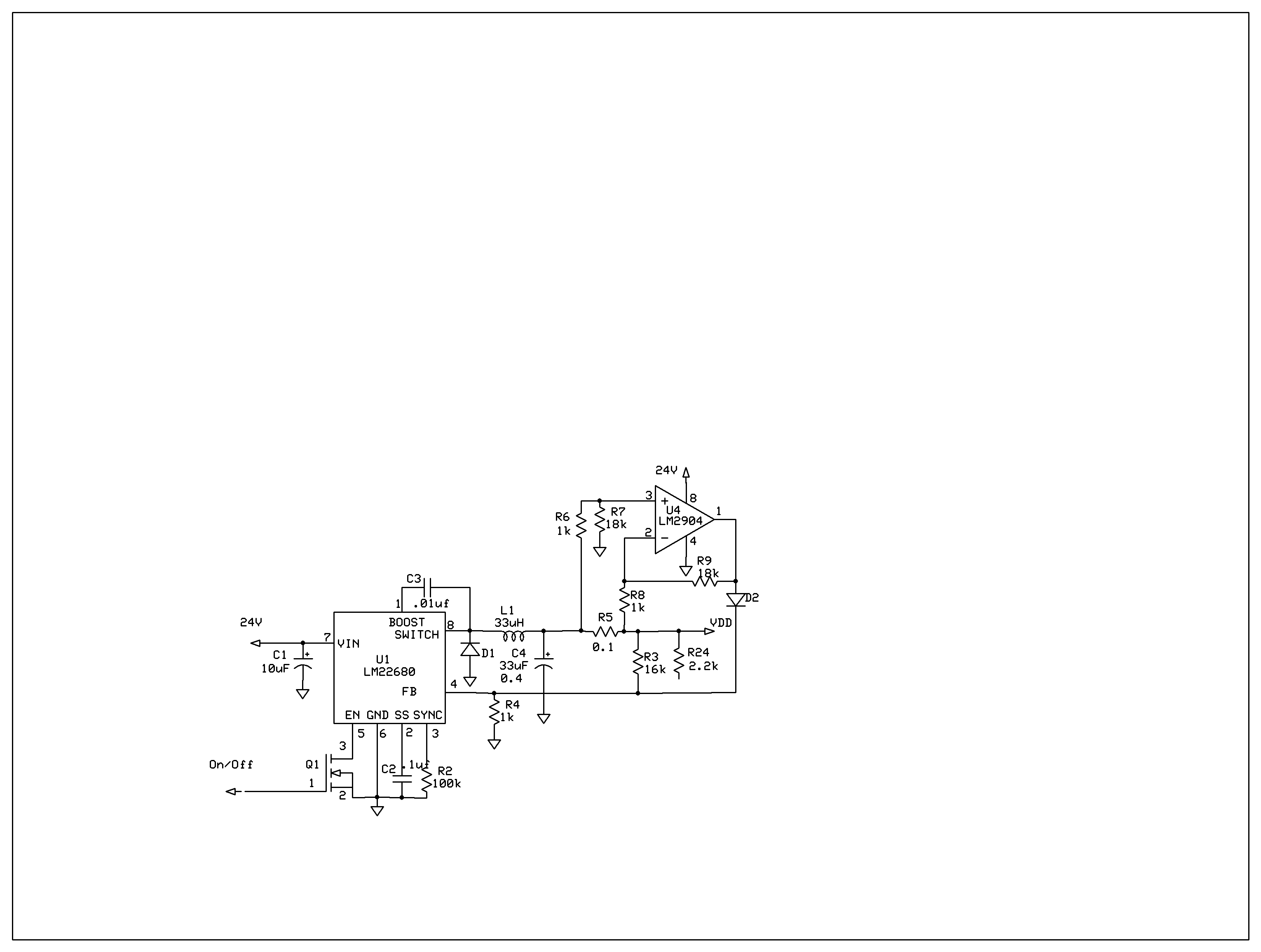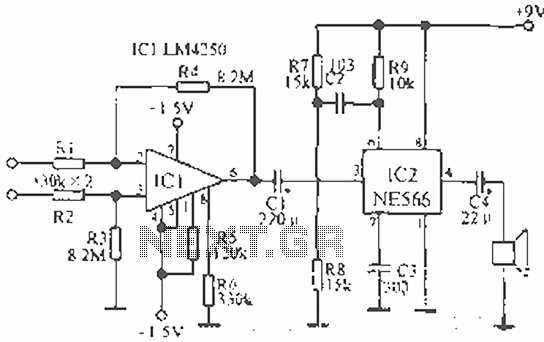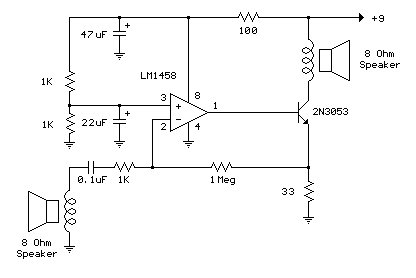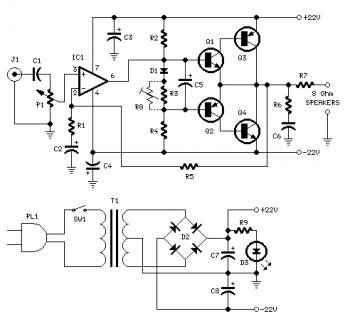
Low Noise And Drift Composite Amp Circuit
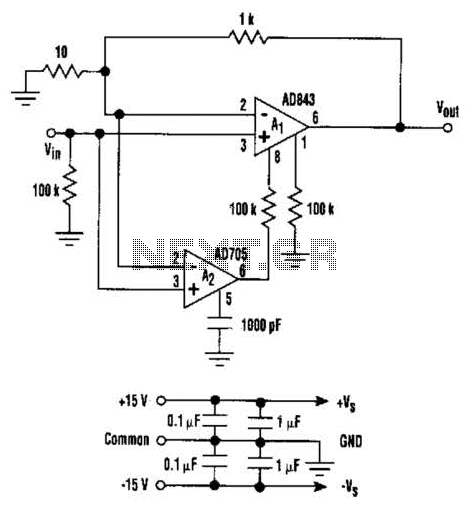
This circuit combines the advantages of low input offset voltage and drift without compromising the overall dynamic performance of the system. When compared to a standalone FET input operational amplifier, the composite amplifier circuit demonstrates a 20-fold improvement in voltage offset and drift. In this configuration, A1 is a high-speed FET input operational amplifier with a closed-loop gain of 100, where the source impedance is set at 100 kΩ. A2 is a SuperBeta bipolar input operational amplifier, characterized by favorable DC performance, biFET-level input bias current, and low noise. A2 monitors the voltage at the input of A1 and injects current into A1's null pins, effectively allowing A1 to exhibit the input properties of a bipolar amplifier while preserving its bandwidth and low-input-bias-current noise.
The described circuit configuration represents a sophisticated approach to achieving enhanced performance in operational amplifiers by utilizing a composite design that leverages both FET and bipolar technologies. The high-speed FET input operational amplifier (A1) is specifically designed to provide rapid response times and excellent bandwidth, making it suitable for applications requiring quick signal processing. The closed-loop gain of 100 ensures that the output signal is amplified significantly while maintaining signal integrity.
The integration of the SuperBeta bipolar input operational amplifier (A2) introduces a mechanism for improving the input offset voltage and drift characteristics of the system. By monitoring the input voltage at A1 and dynamically adjusting the current injected into the null pins, A2 effectively compensates for any discrepancies that may arise due to temperature variations or component tolerances. This feedback loop is crucial in maintaining the desired performance levels, particularly in precision applications where accuracy is paramount.
The choice of a source impedance of 100 kΩ is notable, as it balances the trade-off between noise performance and input impedance. A higher source impedance can lead to increased noise, but in this configuration, the low noise characteristics of A2 help mitigate these effects, thereby preserving the overall signal quality.
This composite amplifier circuit is ideal for applications requiring high precision, such as instrumentation and sensor interfacing, where maintaining low offset and drift is essential for accurate measurements. The synergy between the FET and bipolar technologies in this design exemplifies an advanced engineering solution tailored for high-performance electronic systems. This circuit offers the best of both worlds. It can be combined with a low input offset voltage and drift without degrading the overall system`s dynamic performance. Compared to a standalone FET input operational amplifier, the composite amplifier circuit exhibits a 20-fold improvement in voltage offset and drift.
In this circuit arrangement, A1 is a highspeed FET input op amp with a closed-loop gain of 100 (the source impedance was arbitrarily chosen to be 100 kfl). A2 is a SuperBeta bipolar input op amp. It has good dc characteristics, biFET-level input bias current, and low noise. A2 monitors the voltage at the input of A1 and injects current to Al`s null pins. This forces A1 to have the input properties of a bipolar amplifier while maintaining its bandwidth and low-input-bias-current noise.
The described circuit configuration represents a sophisticated approach to achieving enhanced performance in operational amplifiers by utilizing a composite design that leverages both FET and bipolar technologies. The high-speed FET input operational amplifier (A1) is specifically designed to provide rapid response times and excellent bandwidth, making it suitable for applications requiring quick signal processing. The closed-loop gain of 100 ensures that the output signal is amplified significantly while maintaining signal integrity.
The integration of the SuperBeta bipolar input operational amplifier (A2) introduces a mechanism for improving the input offset voltage and drift characteristics of the system. By monitoring the input voltage at A1 and dynamically adjusting the current injected into the null pins, A2 effectively compensates for any discrepancies that may arise due to temperature variations or component tolerances. This feedback loop is crucial in maintaining the desired performance levels, particularly in precision applications where accuracy is paramount.
The choice of a source impedance of 100 kΩ is notable, as it balances the trade-off between noise performance and input impedance. A higher source impedance can lead to increased noise, but in this configuration, the low noise characteristics of A2 help mitigate these effects, thereby preserving the overall signal quality.
This composite amplifier circuit is ideal for applications requiring high precision, such as instrumentation and sensor interfacing, where maintaining low offset and drift is essential for accurate measurements. The synergy between the FET and bipolar technologies in this design exemplifies an advanced engineering solution tailored for high-performance electronic systems. This circuit offers the best of both worlds. It can be combined with a low input offset voltage and drift without degrading the overall system`s dynamic performance. Compared to a standalone FET input operational amplifier, the composite amplifier circuit exhibits a 20-fold improvement in voltage offset and drift.
In this circuit arrangement, A1 is a highspeed FET input op amp with a closed-loop gain of 100 (the source impedance was arbitrarily chosen to be 100 kfl). A2 is a SuperBeta bipolar input op amp. It has good dc characteristics, biFET-level input bias current, and low noise. A2 monitors the voltage at the input of A1 and injects current to Al`s null pins. This forces A1 to have the input properties of a bipolar amplifier while maintaining its bandwidth and low-input-bias-current noise.
